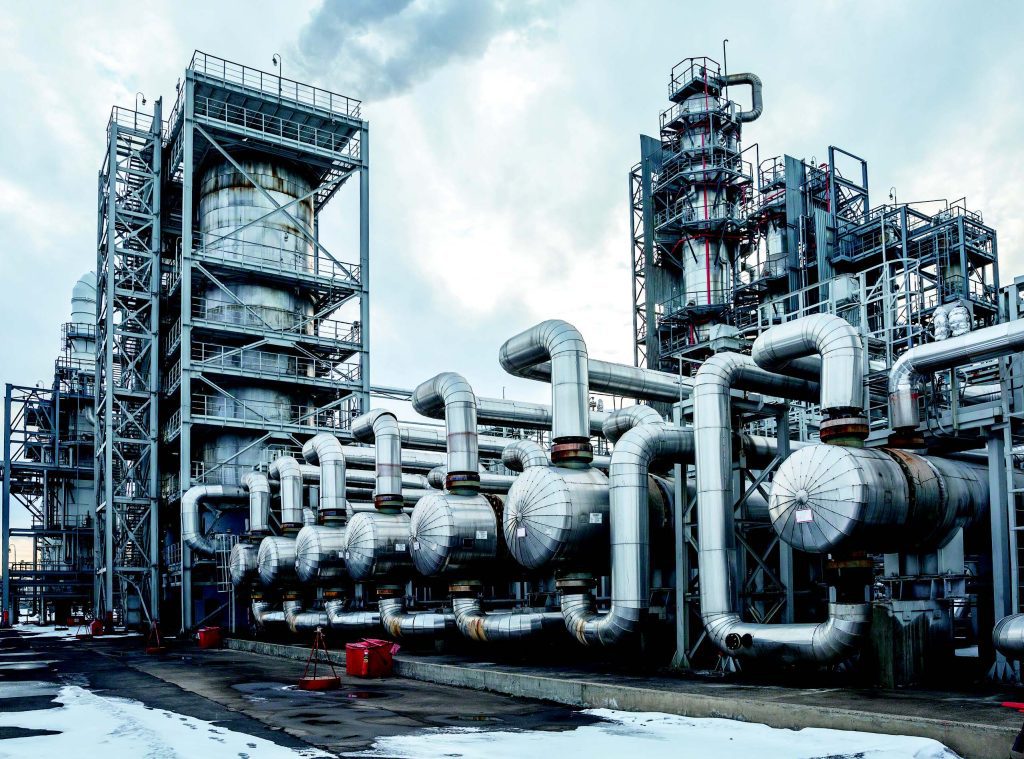In this series of articles we will look at the idea of heat transfer enhancement. The benefits of enhancement are that your heat exchangers will provide the same performance at a lower cost or provide better performance at the same or smaller overall size and footprint.
By Himanshu Joshi, Heat Exchanger Specialist, and Lou Curcio, Heat Transfer Advisor

The purpose of a heat exchanger is to transfer heat (provide a heat duty), which requires a temperature difference and a surface across which the heat is transferred. In the process industry, the starting point for a heat exchanger design is almost always a shell-and-tube (S&T) heat exchanger with plain tubes, plain implying no fins or other surface modifications. Enhancement techniques result in heat exchangers which are smaller, less prone to failure (more reliable), have lower fouling, or are easier to maintain.
The heat duty is represented by this commonly used equation:
Q = U * A *ΔT (1) Which can also be written as
A = Q / (U *ΔT) (2) Q = heat duty [W]
U = overall heat transfer coefficient, OHTC [W/m2-C]
A = heat transfer surface area [m2]
ΔT = Temperature driving force for heat transfer [C]
Eq. (1) shows that we can increase the heat duty by increasing the surface area or the OHTC.
It may be possible to increase the temperature difference, for example by ensuring fully countercurrent flow, but in practice the other two parameters have a significantly larger impact. Eq. (2) shows that for a fixed heat duty the surface area can be decreased by increasing the OHTC. A third aspect, not conveyed by these equations, is that the required surface area can be accommodated in a smaller volume leading to a smaller and lighter heat exchanger – this is the idea of compactness, such as provided by plate-type heat exchangers. Analogous to this idea is that in some cases, the ∆T is either fixed or may not exceed a predefined limit that leads to unusually large surface areas which are not practical for S&T exchangers. In this first article of the series, we will look at generic aspects of enhancement – advantages, different types of enhancement, costs, and what precautions are necessary.
Advantages of enhancement
Here is a summary of the various advantages to be gained by heat transfer enhancements. They include capital and operating expense reduction, and lower energy and emission costs. Other benefits may be obtained if there is close collaboration with process engineers during the early stages of project planning and equipment selection. If the standard S&T is replaced by a smaller one: lower fabrication cost, lower weight and correspondingly lower installation and maintenance costs, and smaller plot space especially for new construction. If the enhancement is for fouling reduction: fewer process interruptions for cleaning and fewer incidents of throughput reduction, lower cleaning costs, lower energy and emissions costs when a loss of heat duty is compensated by higher fuel consumption.
If the S&T is replaced by a non-tubular heat exchanger (plate-type): lower weight and correspondingly lower installation and maintenance costs, and smaller plot space especially for new construction. Debottlenecking: If the heat duty of a heat exchanger needs to increase due to a process expansion or other changes, enhancement can allow the change with the same size and footprint as the existing heat exchanger.
Enhancement types
Four categories of enhancement are usually applicable in process S&T heat exchangers:
- Increase surface area, typically by forming or attaching fins on the outside or inside of tubes.
- Increase in the heat transfer coefficient by enhancing turbulence or by improved mixing.
- Decrease in the fouling margin (and therefore excess surface area) by mitigating fouling by using techniques such as inserts, coatings, or vibration.
- Change to non-tubular heat exchangers (plate-type) such as Plate-and-Frame, Spiral, or Plate-Fin.
Each category has different advantages to be assessed to verify expected benefits and precautions to be taken to ensure applicability.
Costs:
In addition to the cost to purchase one of the technologies mentioned above, there are costs
of implementation such as field work to change piping, and some techniques may require a change to a higher priced metallurgy. These other costs may or may not apply depending on whether we are replacing a standard S&T design in a new project, whether it is part of a revamp or debottleneck of existing facilities, or whether it is used just to replace tube bundles without any other changes. If a decision is to be made based on the benefit vs cost, it is necessary to add up all the cost components (such as the total installed cost and lifecycle cost), not just the price of initial purchase.
Precautions
Plain tube S&T heat exchangers can be designed to withstand a wide range of pressures and temperatures required by most processes, by sizing diameters and thicknesses. Additionally, they can be the minimum capital cost choice due to the use of low cost metallurgies, such as standard carbon steel. Any enhancement technique must ensure that it has equivalent or better mechanical reliability. The aspect of reliability also extends to maintenance. If enhancement results in increased or more difficult maintenance (e.g., difficulty in cleaning) or a technology requires periodic expenditure for refurbishment, those lifecycle costs should be included in the initial benefit/cost evaluation.
Upcoming in this series
In upcoming articles, we will look at details of specific technologies available for heat transfer enhancement – how they work, advantages and disadvantages, applicability, precautions to be taken, costs, maintenance aspects, and field experience.
About the author
 Himanshu Joshi retired from Shell in 2021 after 34 combined years with ExxonMobil and Shell, during which he specialized in heat exchangers and fouling. He was part of a team that was granted a patent related to fouling deposit analysis at ExxonMobil, and led applied fouling R&D projects at both companies. He has made several presentations about the field aspects of fouling and fouling mitigation, and deployed many mitigation technologies in the field. He can be reached by email at alph.hmj@gmail.com.
Himanshu Joshi retired from Shell in 2021 after 34 combined years with ExxonMobil and Shell, during which he specialized in heat exchangers and fouling. He was part of a team that was granted a patent related to fouling deposit analysis at ExxonMobil, and led applied fouling R&D projects at both companies. He has made several presentations about the field aspects of fouling and fouling mitigation, and deployed many mitigation technologies in the field. He can be reached by email at alph.hmj@gmail.com.
About the author
 Lou Curcio has over 30 years of experience in design, troubleshooting
Lou Curcio has over 30 years of experience in design, troubleshooting
and repair of all types of heat exchangers. Leader of technology
development projects and advisor for ExxonMobil’s global manufacturing
teams. Co-inventor of two U.S. patents and co-author of papers on
enhanced heat transfer and fouling of heat exchange.
About this Technical Story
This Technical Story was first published in Heat Exchanger World Magazine in December 2024. To read more Technical Stories and many other articles, subscribe to our print magazine.
Technical Stories are regularly shared with our Heat Exchanger World community. Join us and share your own Technical Story on Heat Exchanger World online and in print.

